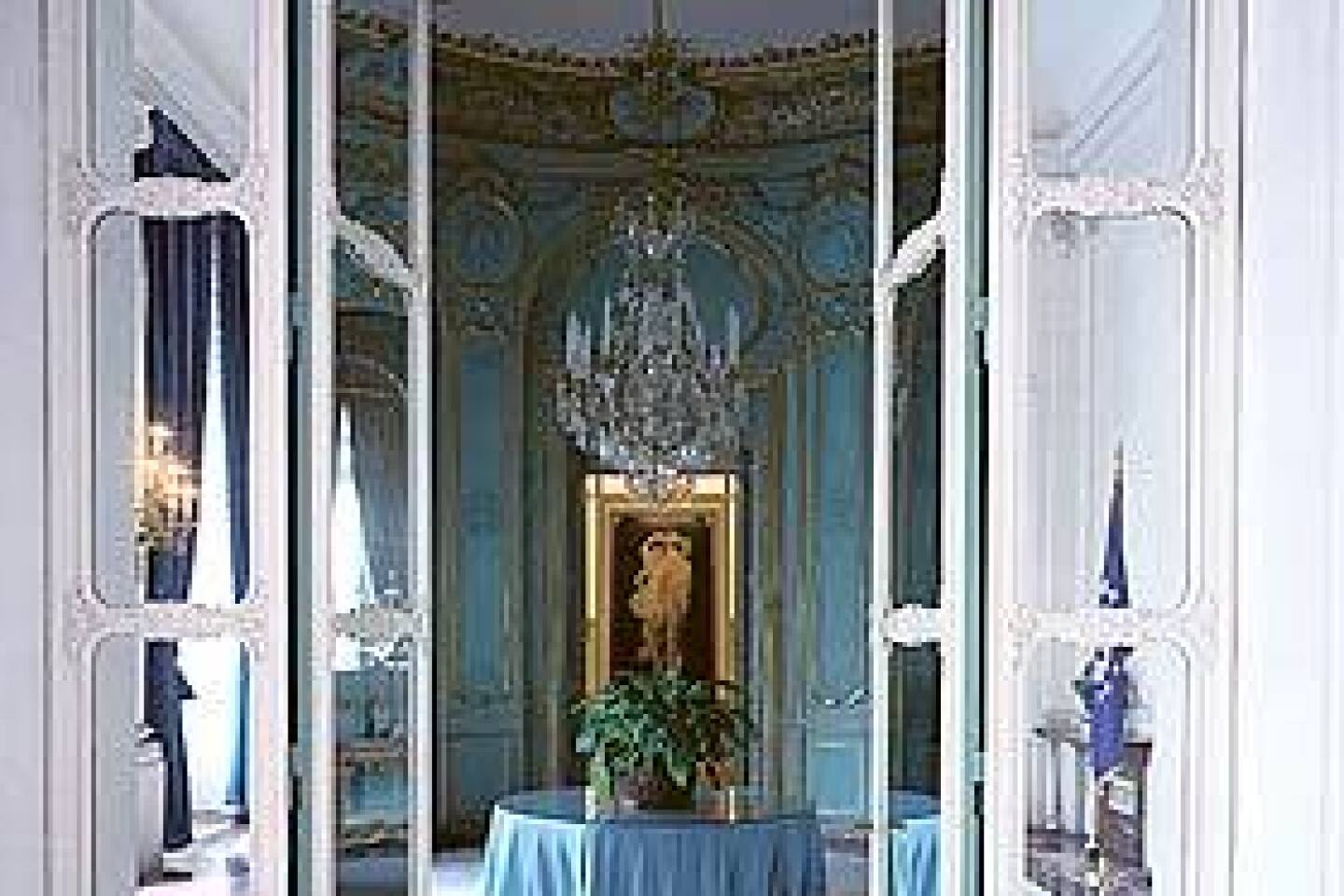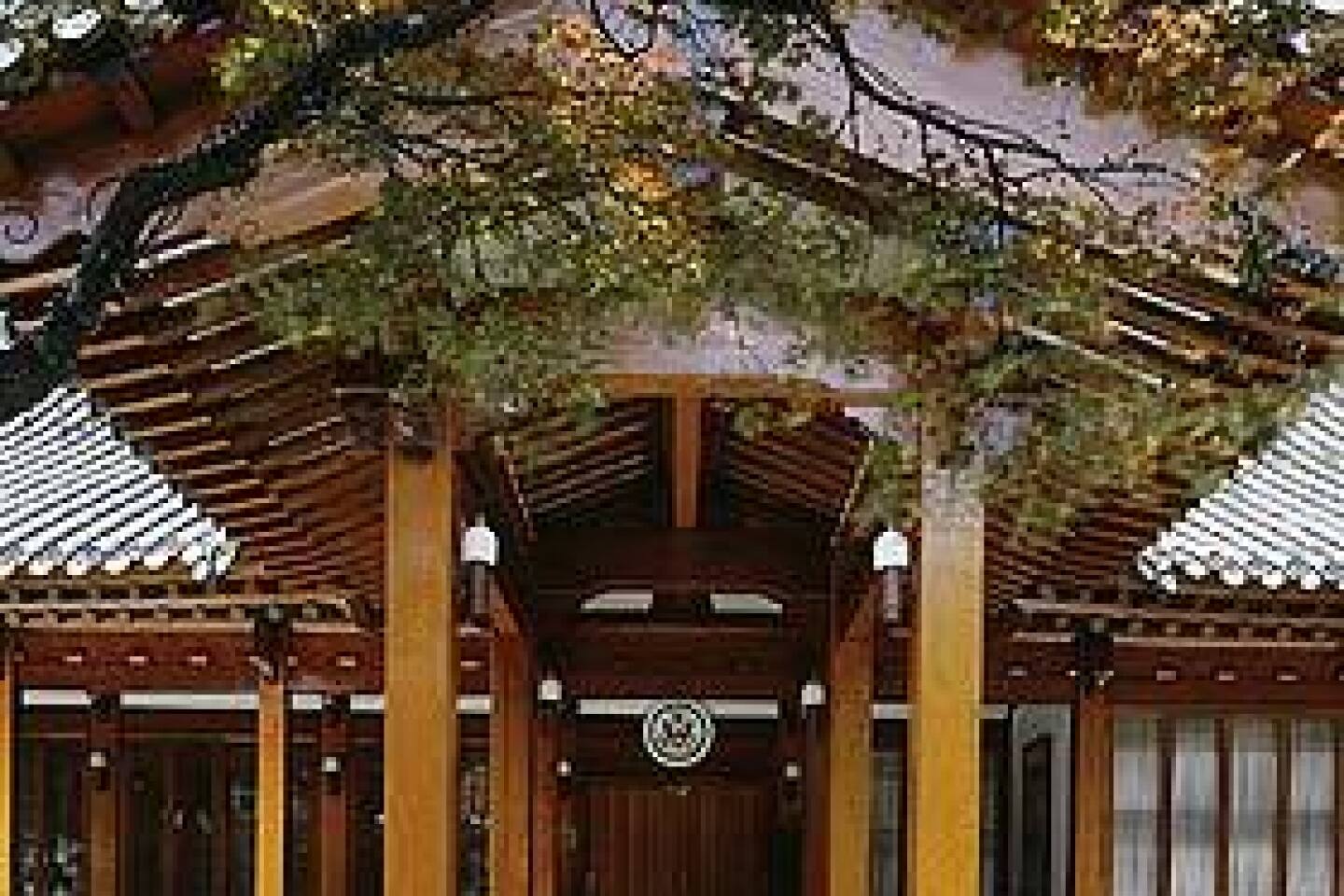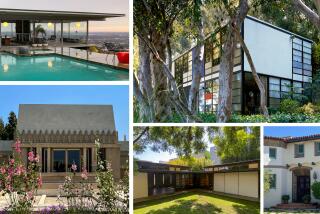The Houses Diplomacy Built
Travelers associating the words “American embassy” only with lost passports and long lines are missing out. Judging from the 40-plus locations showcased in “Building Diplomacy: The Architecture of American Embassies” (Cornell University Press, $50), travel guides might be advised to list America’s foreign diplomatic centers under “Things to See.”
Los Angeles-based photographer Elizabeth Gill Lui got the idea for the project in 1991 while visiting the American ambassador’s residence in Moscow after an exhibition of her work in Latvia. “The building, which was erected in 1914, is in the style called New Empire, which resembles the palatial architecture of St. Petersburg [Russia],” says Lui, whose daughter, Keya Keita, collaborated on the effort and shot “Looking for America,” a documentary on the project available on DVD with a limited-edition version of the book. “The juxtaposition of this elegant pre-revolution building, with its American art collection, in the middle of Moscow, which at that time was near collapse, was so dramatic.”
After nearly 10 years and an intervening book on 20th century museum architecture, Lui in November of 2000 made the first of six embassy project trips—picking an area such as Asia or Africa and shooting there for six weeks to two months. She was fortified, she says, with a sign-off from then-Secretary of State Madeleine Albright and support from arts patron J. Landis Martin, chief executive of Timet, the world’s largest supplier of titanium whose projects include the Guggenheim in Bilbao, Spain, which Lui had shot for the museum book. The artist chose her subjects “based primarily on aesthetic diversity,” she says. “Some [embassies] are historical. Others were acquired by us after World War II. Others were built after 1983, when Beirut was bombed and the first security guidelines were instituted for the design of embassy buildings, such as fewer windows of smaller size. I wanted to do a fair representation. I also wanted to dispel the notion that all of our embassies are extravagant buildings. Some are very modest.”
Lui photographed embassy residences as well as chanceries, the buildings where official day-to-day business takes place. Standouts among the latter include architect Eero Saarinen’s mid-century design in London and the Palazzo Margherita, a late 19th century palace in Rome with Giambologna’s celebrated Venus sculpture in the foyer. As for diplomatic residences, there are the white stucco digs of the ambassador in Tunisia, with its blue pool fronting the bluer Bay of Tunis, and the expansive living room of the ambassador’s residence in Tokyo, with its massive marble columns, antique furnishings and gold chandeliers.
Lui had just arrived in Paris for the third trip of the project when she heard reports of the 9/11 attacks. “I had doubts that I would be allowed to continue,” she says. But days later in the Netherlands, she photographed the U.S. Embassy at The Hague fronted by a sea of flower bouquets. For Lui, the project was more than a collection of architectural photographs. Her hope, she says, is that it will “really appeal to the American people to build a constituency for cultural diplomacy.”
More to Read
Sign up for The Wild
We’ll help you find the best places to hike, bike and run, as well as the perfect silent spots for meditation and yoga.
You may occasionally receive promotional content from the Los Angeles Times.















